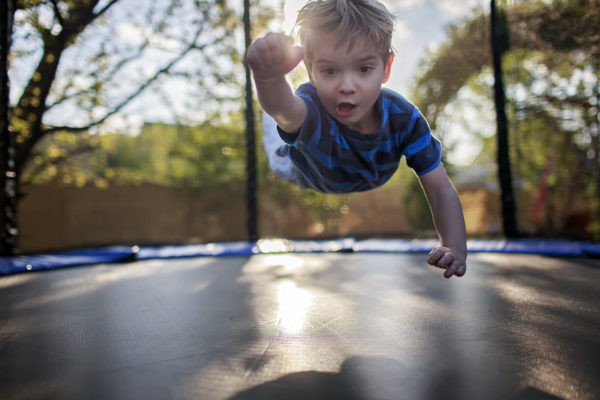Keeping Kids Active
As parents, we are all juggling competing priorities right now.

Right up there with working from home, being on call to support distance learning, and family wellbeing is making sure our kids are getting enough physical exercise and eating well.
The juggling act is even more tricky for those parenting in states with restrictions caused by the current Covid-19 pandemic.
Organised kids’ sport has been cancelled, there’s limits on the time we can exercise outdoors, playgrounds are closed and, while we are in remote learning phase, our kids can’t get all their incidental physical activity at school recess and lunchtimes while playing with their mates.
So how can you keep all the balls in the air? Here are some tips on how to schedule exercise and eating well into the family’s daily timetable.
Exercise as a family
You can model good habits for your boy by making exercise a family activity. Take him with you for a walk, run, or cycle (keeping in mind exercise outdoors is limited to one hour in some states). He could scoot or skate while you walk or run.
Indoor fun
There are a lot of individual and family activities that can be done in the backyard or even inside – jumping on the trampoline, kicking a footy or soccer ball, shooting some hoops, making and completing an obstacle course, practising balance and body control activities.
Every bit counts
The Australian Department of Health guidelines for healthy growth and development for children and young people aged five to 17 years recommend a minimum of 60 minutes of moderate to vigorous physical activity each day.
If an hour block of exercise won’t fit into your daily schedule, aim for smaller blocks of at least 10 minutes throughout the day.
Be smart with food
As your son is still growing, his muscles moving and his bones mineralising, he needs to fuel himself appropriately and not head towards a diet culture or cut back on meals.
If he is physically active as usual, nothing should change with his diet and he should eat regular balanced meals and snacks every three or four hours.
If he is less physically active, frequency of his meals and snacks should not change, but you can dial up his protein intake and dial back his carbohydrate intake.
For example, with a mid-morning snack, swap the muesli bar, fruit and yoghurt for nuts, fruit and yoghurt.
For dinner, Sports Dietitians Australia recommends a balanced plate of food for 12 – 18 year olds is 1/3 plate carbohydrate foods, 1/3 plate protein foods and 1/3 plate vegetables or legumes. You can read more at the Nutrition Kitchen.
You’ll feel better
Science shows that when you exercise, endorphins and other chemicals are released in your brain that help you to feel happy and confident, and less anxious and stressed. Exercise can also boost our immune system, helps us to sleep better and have more energy.
We all need a mood lift in these challenging times and making more time for exercise in your and your son’s life is a step in the right direction.
Brought to you by Brighton Grammar School
Glenn Garland, Tim Marshall and Ian Miller are a Junior School Physical Education teacher, a Director of Sport at a boys’ school, and a Strength and Conditioning expert with an interest in nutrition respectively. This article is about ParentingSubscribe to Understanding Boys. It’s free!
Got boys? Sign up for tips and advice you'll actually use.
